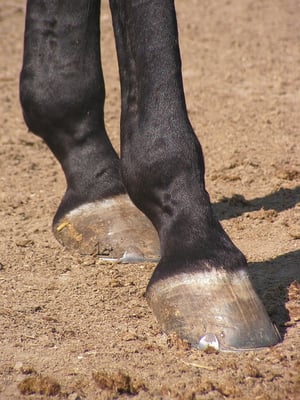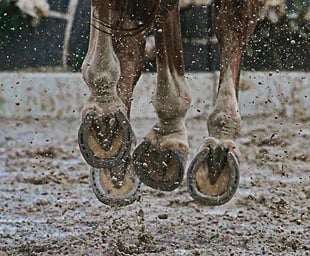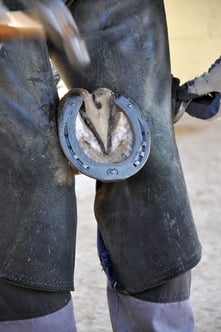Call us today (800) 444-7430
Call us today (800) 444-7430
 Common signs of a hoof abscess include:
Common signs of a hoof abscess include: particles (dirt, sand) become engrained in the sensitive lamina underneath the hoof wall, causing an infection in the hoof. The infection can travel up the hoof and drain at the coronary band or stay close to the sole of the hoof. An abscess can also occur under the bars of the hoof.
particles (dirt, sand) become engrained in the sensitive lamina underneath the hoof wall, causing an infection in the hoof. The infection can travel up the hoof and drain at the coronary band or stay close to the sole of the hoof. An abscess can also occur under the bars of the hoof. If the point of origin and the abscess cannot be identified or the infection is too deep in the hoof, (the abscess could be deep in the heel/frog/bars region), no cutting will occur. Cutting too much or going too deep can be more harmful than beneficial. If a drain hole is not able to be made or cannot sufficiently drain the abscess, then most likely the abscess will progress up to the coronary band and the pus will drain there.
If the point of origin and the abscess cannot be identified or the infection is too deep in the hoof, (the abscess could be deep in the heel/frog/bars region), no cutting will occur. Cutting too much or going too deep can be more harmful than beneficial. If a drain hole is not able to be made or cannot sufficiently drain the abscess, then most likely the abscess will progress up to the coronary band and the pus will drain there.

From horse stalls to barn doors, stable flooring and entrance gates, Classic offers the widest product lines in the industry while continuing to expand through innovation and strategic alliances.
We look forward to answering your questions. Our sales team is knowledgeable about everything from horse barn design to equine stall systems and readily available to assist you in planning your Classic barn!
ph: (800) 444-7430
em: sales@classic-equine.com
